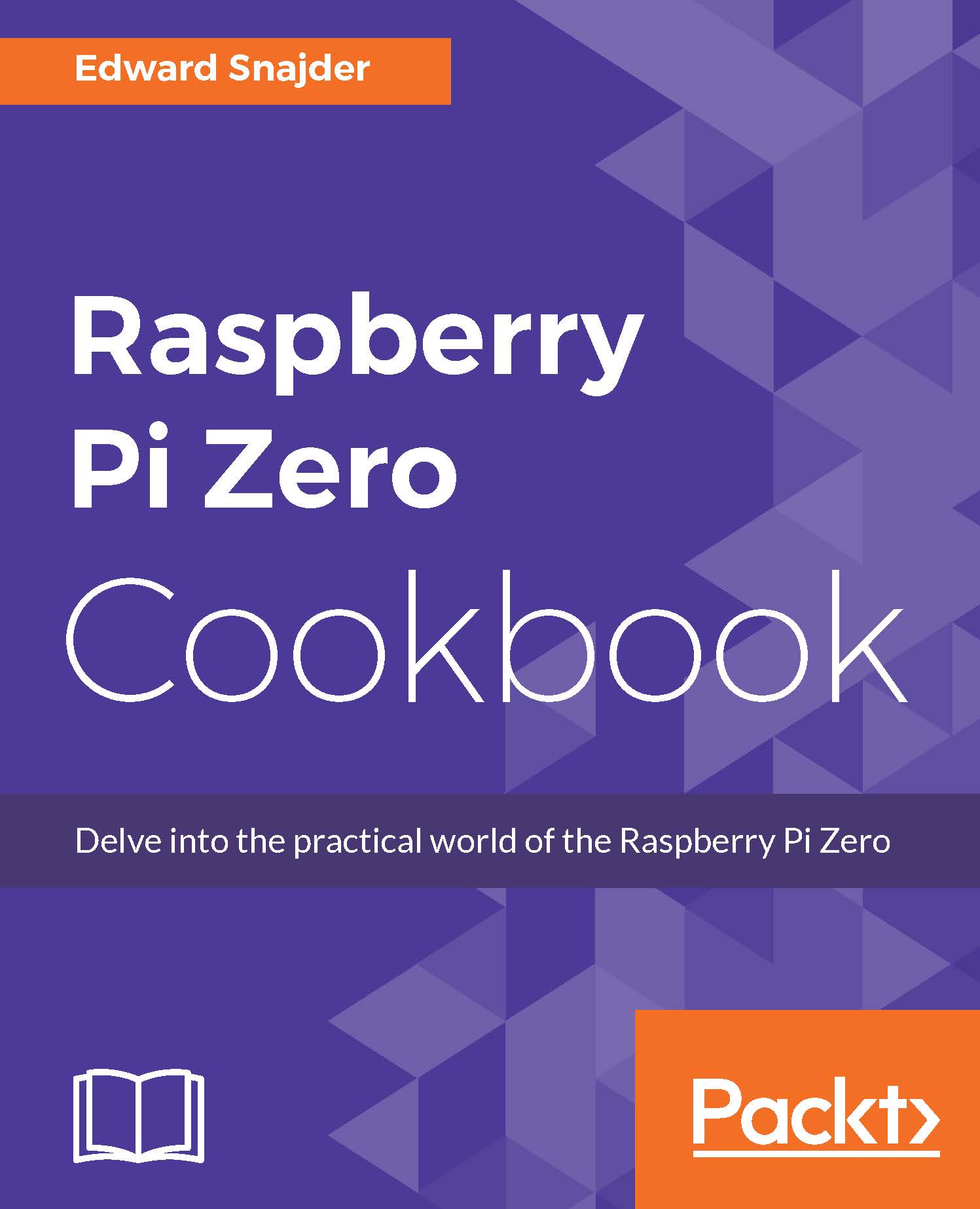Reviewing power supply requirements
One of the outstanding things about the Raspberry Pi Zero is its low power requirement, even compared to its siblings. The power is received through the second micro-USB slot on the board, and it should never need greater than a 5-V/1 A power supply. A well-configured Raspberry Pi in idle state can draw as little as 30 mA, and even under stress, it has not been shown to use more than 350 mA! Your Raspberry Pi Zero could run for free with a small solar panel and rechargeable battery pack. The Raspberry Pi 2 and 3, while more powerful, generally use from two to five times as much power to run.
How to do it...
You can also power your Raspberry Pi Zero over the GPIO ports, though it is important to be careful to have consistent and predictable power so you don't fry your board. The easiest method is certainly to find steady 5V source that works over micro-USB, but with careful design, you can run your board from any power supply with consistent 5 V and current up to 1 A. We will run our Raspberry Pi Zero on batteries later in this cookbook.
Of course, as you add peripherals, there will be a need to draw more current. If on USB, using a powered USB port will help a lot. When working with devices you have connected directly to GPIO, you just need to make sure your Raspberry Pi Zero power source can provide enough current to run the board and what's attached to it.
Until you have an SD card ready, you won't really be able to test the power completely - you can plug the adapter into the Raspberry Pi, but keep it unplugged from the power for now.







































































